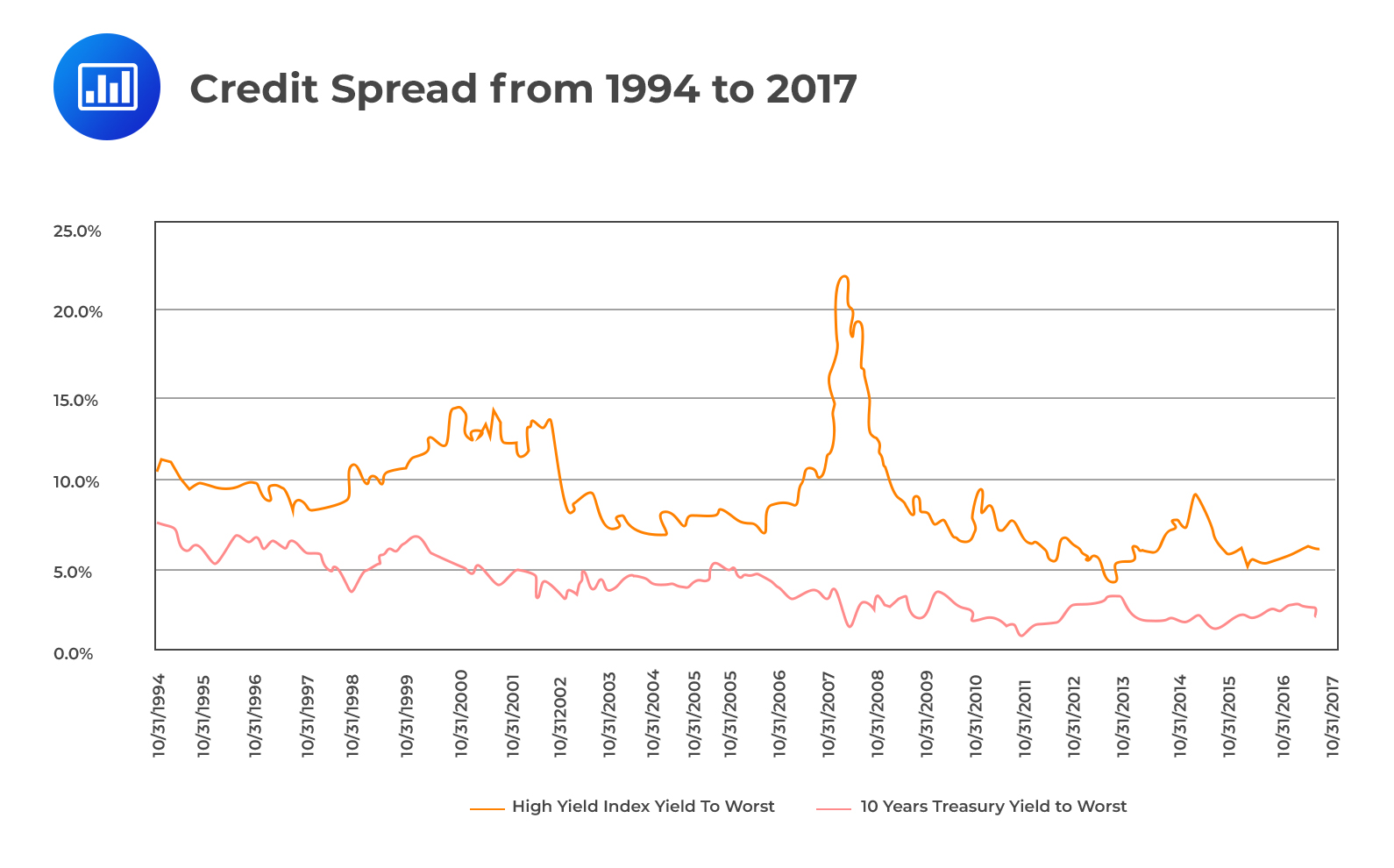

Finance
What Is PG Credit
Published: January 6, 2024
Discover what PG Credit is and how it can help you with your finance needs. Explore the benefits and features of PG Credit today.
(Many of the links in this article redirect to a specific reviewed product. Your purchase of these products through affiliate links helps to generate commission for LiveWell, at no extra cost. Learn more)
Table of Contents
Introduction
When it comes to accessing credit, there are various options available to individuals looking to borrow money. One such option is PG credit, a concept that offers unique benefits for both borrowers and lenders. PG credit, short for personal guarantee credit, is a form of credit where a borrower provides a personal guarantee as collateral for the loan.
Personal guarantee credit is commonly used by small business owners, entrepreneurs, and individuals with limited credit history who are seeking financing. It provides a way for borrowers to overcome the hurdle of not having sufficient collateral or a strong credit score.
Within the realm of personal finance, understanding different forms of credit is essential. This article will delve into the details of PG credit, including its definition, purpose, how it works, the benefits it offers, examples of its applications, and how it compares to other forms of credit. We will also explore the factors to consider before using PG credit, the associated risks, and tips for managing PG credit effectively.
Whether you are a business owner seeking financing or an individual looking for credit options, having a clear understanding of PG credit can help you make informed decisions and navigate the borrowing landscape effectively.
Definition of PG Credit
PG credit, also known as personal guarantee credit, is a form of borrowing where the borrower provides a personal guarantee to the lender as collateral. In simple terms, it means that the borrower is personally guaranteeing the repayment of the loan, even if the business or project for which the loan was taken fails to generate sufficient funds.
When obtaining PG credit, the lender typically assesses the creditworthiness of both the borrower and the guarantor. The guarantor is usually an individual with a strong financial standing, such as a business owner or project sponsor, who is willing to take on the responsibility of repaying the loan if the borrower is unable to do so.
This personal guarantee serves as a form of security for the lender, as it minimizes the risk associated with lending to borrowers who may not have sufficient assets or credit history to qualify for traditional loans.
Personal guarantee credit can be utilized in a variety of situations, including business loans, lines of credit, mortgages, and other types of financing. It is often sought by small business owners and entrepreneurs who lack the necessary collateral or credit history to secure a loan on their own.
It is important to note that personal guarantee credit places a significant level of responsibility on the guarantor. In the event of default, the guarantor’s personal assets, such as savings, real estate, or other investments, may be seized by the lender to fulfill the debt obligations.
Overall, PG credit provides an opportunity for borrowers to access financing that they may not otherwise qualify for, while also offering lenders an added layer of security through the personal guarantee provided by the borrower and guarantor.
Purpose of PG Credit
The primary purpose of PG credit is to provide borrowers, especially those with limited credit histories or insufficient collateral, with access to financing. This form of credit plays a crucial role in helping small business owners, entrepreneurs, and individuals achieve their financial goals.
Here are some key purposes of PG credit:
- Expand Business Operations: PG credit can be used by business owners to fund various initiatives, such as expanding operations, purchasing inventory, or investing in new equipment. It allows businesses to access the capital they need to grow and thrive.
- Start a New Business: For aspiring entrepreneurs, securing financing can be challenging. PG credit offers an avenue for individuals to obtain the necessary funds to start their own business, helping to turn their entrepreneurial dreams into reality.
- Bridge Temporary Cash Flow Gaps: Sometimes businesses or individuals may experience temporary cash flow gaps where immediate funds are required. PG credit can provide a flexible solution to bridge these gaps until revenue is generated.
- Build Credit History: PG credit offers an opportunity for individuals to establish or improve their credit history. By making timely payments and fulfilling their obligations, borrowers can demonstrate their creditworthiness, paving the way for future financing opportunities.
- Access to Competitive Rates: While PG credit may have higher interest rates compared to traditional loans, it can still provide access to financing at competitive rates for individuals who may not qualify for other types of credit.
Personal guarantee credit is a versatile financial tool that serves a wide range of purposes, enabling borrowers to pursue their aspirations and achieve financial success. It offers an alternative path to obtaining funding when traditional avenues may be inaccessible.
How PG Credit Works
Understanding how PG credit works is essential for borrowers looking to leverage this form of financing. Here are the key steps involved in the process:
- Application: The borrower initiates the process by submitting an application for PG credit to the lender. This typically includes providing personal and financial information, as well as details about the purpose of the loan.
- Assessment: The lender evaluates the creditworthiness of both the borrower and the guarantor. They analyze factors such as credit history, income, assets, and debt-to-income ratio to assess the risk involved in granting the loan.
- Personal Guarantee: In PG credit, the guarantor offers a personal guarantee, which serves as collateral for the loan. This means that in the event of default, the guarantor is responsible for repaying the loan on behalf of the borrower.
- Loan Approval: Upon approval, the lender will specify the terms and conditions of the loan, including the interest rate, repayment schedule, and any fees associated with the loan. The borrower and guarantor must review and agree to these terms before proceeding.
- Loan Disbursement: Once the loan agreement is signed, the lender disburses the funds to the borrower. The borrower can then utilize the funds for the intended purpose, such as business expansion or personal expenses.
- Repayment: The borrower is responsible for making regular repayments according to the agreed-upon schedule. Failure to repay the loan can result in legal action and the seizure of personal assets owned by the guarantor.
- Credit Reporting: Timely repayment of the loan can help borrowers build or improve their credit history. Lenders may report the payment activity to credit bureaus, positively impacting the borrower’s credit score.
It is important for borrowers to carefully consider the terms and repayment obligations associated with PG credit. Understanding the loan agreement and having a solid repayment plan in place is crucial to ensure a successful borrowing experience.
Additionally, borrowers should be aware that PG credit carries the risk of personal liability for the guarantor. Both the borrower and guarantor should assess their financial capabilities and potential risks before entering into a PG credit arrangement.
Benefits of PG Credit
PG credit offers several benefits to both borrowers and lenders, making it a popular choice in various financial situations. Here are some key advantages of utilizing PG credit:
- Access to Financing: PG credit provides borrowers with access to funds they may not otherwise be able to obtain. It opens up opportunities for individuals with limited credit history or insufficient collateral to secure financing for their personal or business needs.
- Flexibility: Unlike some traditional forms of collateral-based loans, PG credit offers flexibility in how borrowers can utilize the funds. Whether it’s expanding a business, investing in real estate, or covering personal expenses, borrowers have the freedom to choose how the funds are used.
- Building Credit History: For individuals with limited credit history, PG credit offers a chance to establish a positive credit record. Consistently making timely loan repayments can help improve the borrower’s credit score over time, making it easier to access credit in the future.
- Favorable Loan Terms: PG credit can often come with more favorable loan terms compared to other high-risk lending options. While interest rates may be higher than traditional loans, borrowers with a strong personal guarantee may still be able to secure competitive rates and repayment terms.
- Joint Opportunities: PG credit allows borrowers to partner with a guarantor who has a strong financial standing. This collaboration can open doors to joint ventures, business partnerships, and investment opportunities that may not be available otherwise.
- Business Growth: For small business owners and entrepreneurs, PG credit can be instrumental in fueling business growth. It provides the necessary capital to expand operations, invest in new technology or equipment, and hire additional staff.
It is important for borrowers to weigh the benefits of PG credit against their specific financial goals and circumstances. While it offers numerous advantages, it is essential to carefully consider the associated risks and ensure the borrower and guarantor are comfortable with their respective obligations and liabilities.
Examples of PG Credit
PG credit is widely used across various industries and financial situations. Here are some examples of how PG credit can be applied:
- Small Business Loan: A small business owner who lacks the necessary collateral to secure a traditional business loan may opt for PG credit. They might provide a personal guarantee, backed by their personal assets, to obtain the financing needed to expand their operations or invest in new equipment.
- Real Estate Investment: An individual interested in purchasing a rental property but lacking sufficient credit or assets to secure a mortgage may seek PG credit. With a strong personal guarantee, they can secure the loan from the lender and proceed with their real estate investment plans.
- Startup Funding: Aspiring entrepreneurs who are starting a new business venture often face difficulty obtaining financing due to the absence of a track record or collateral. PG credit can be a viable option for obtaining the necessary capital to launch their business and get it off the ground.
- Franchise Financing: Those interested in buying a franchise may require additional funds to cover franchise fees, equipment purchases, and working capital. PG credit can be used to secure the financing needed to enter the franchise business.
- Education Loans: Students who lack the credit history or collateral to qualify for traditional education loans might turn to PG credit options. A parent or guardian can provide a personal guarantee to secure the loan on behalf of the student, ensuring access to funding for their educational pursuits.
These are just a few examples of how PG credit can be utilized in different scenarios. The flexibility and accessibility of PG credit make it a valuable solution for individuals and businesses seeking financing opportunities when traditional routes may not be available.
It’s important to note that the specific terms and requirements of PG credit will vary depending on the lender, borrower, and guarantor involved. It is crucial to thoroughly evaluate the terms and obligations before committing to a personal guarantee credit arrangement.
PG Credit vs. Other Forms of Credit
When considering borrowing options, it is important to understand how PG credit compares to other forms of credit. Here are some key differences between PG credit and other common types of credit:
- Collateral Requirement: Unlike secured loans where collateral, such as real estate or vehicles, is required, PG credit relies on a personal guarantee as collateral. This means that borrowers do not need to pledge specific assets to secure the loan.
- Credit History Consideration: Traditional loans often require a strong credit history and score to qualify. PG credit, on the other hand, may be more accessible to individuals with limited credit history or lower credit scores, as the personal guarantee provides an additional layer of assurance for the lender.
- Loan Amount: The loan amount for PG credit may be lower compared to secured loans, as it is based on the borrower’s personal guarantee rather than the assessed value of collateral. Secured loans may offer higher loan amounts, depending on the value of the pledged assets.
- Interest Rates: Interest rates for PG credit tend to be higher than those for secured loans, as the lender is taking on additional risk by relying solely on the personal guarantee of the borrower and guarantor. Secured loans generally have lower interest rates due to the presence of collateral.
- Repayment Terms: The repayment terms for PG credit can be more flexible compared to secured loans, allowing borrowers to negotiate repayment schedules that align with their financial situation. Secured loans often come with fixed repayment periods and terms dictated by the lender.
- Impact on Credit Score: Timely repayment of both PG credit and secured loans can positively impact a borrower’s credit score. However, defaulting on PG credit may have a more severe impact on the personal credit of the guarantor, as they are ultimately responsible for repayment.
It is important to carefully consider the specific needs, financial circumstances, and risk tolerance when choosing between PG credit and other forms of credit. Both options have their advantages and disadvantages, and the suitability will vary based on individual situations.
Consulting with a financial advisor or seeking guidance from reputable lenders can help borrowers weigh the pros and cons of each option and make an informed decision that aligns with their goals.
Factors to Consider Before Using PG Credit
Before using PG credit as a borrowing option, it is crucial to consider several factors to ensure it aligns with your financial situation and goals. Here are some key factors to consider:
- Financial Stability: Assess your financial stability and ability to fulfill the loan repayment obligations. Both the borrower and guarantor should have a clear understanding of their financial standing and evaluate their capacity to assume the responsibility of the personal guarantee.
- Risk Tolerance: Understand the potential risks associated with PG credit. In the event of loan default, the guarantor’s personal assets may be at risk. Evaluate your risk tolerance and determine if you are comfortable with the level of personal liability involved in the personal guarantee.
- Loan Terms and Costs: Carefully review the terms and conditions of the PG credit agreement, including interest rates, repayment schedule, and any associated fees. Compare these factors with other borrowing options to ensure that the costs and terms are reasonable and align with your financial capabilities.
- Impact on Relationships: If you are involving a guarantor, consider the impact it may have on your personal relationship. Discuss the potential financial risks and obligations with the guarantor and ensure everyone involved is comfortable with the arrangement.
- Credit Building Opportunity: Evaluate if using PG credit can help establish or improve your credit history. If your goal is to build credit, ensure that the lender reports timely payments to credit bureaus, as this will positively impact your credit score over time.
- Alternative Financing Options: Explore alternative financing options available to you. Consider traditional loans, secured loans, or other forms of credit to determine if they better suit your needs and offer more favorable terms and conditions.
By carefully considering these factors, you can make an informed decision about using PG credit. Remember to consult with financial advisors or professionals who can provide guidance based on your specific circumstances and assist you in making the right borrowing choice.
Risks Associated with PG Credit
While PG credit offers benefits, it is important to be aware of the risks involved. Understanding these risks can help borrowers navigate the borrowing process and make informed decisions. Here are some key risks associated with PG credit:
- Personal Liability: The primary risk of PG credit is the personal liability assumed by the guarantor. If the borrower defaults on the loan, the guarantor is responsible for repaying the loan using their personal assets. This can jeopardize the guarantor’s financial stability and personal relationships.
- Asset Seizure: In the event of default, the lender may seize the assets of the guarantor to fulfill the outstanding debt. These assets can include savings accounts, real estate, investments, or any other personal assets that were included in the personal guarantee. It is crucial to carefully consider the potential loss of assets before entering into a PG credit agreement.
- Damage to Credit Score: Defaulting on PG credit can seriously damage both the borrower’s and the guarantor’s credit scores. Late payments or loan default can negatively impact creditworthiness, making it more challenging to secure financing in the future.
- Higher Interest Rates: PG credit often carries higher interest rates compared to other types of credit, reflecting the increased risk for the lender. Borrowers should carefully assess their ability to manage higher interest payments and consider alternative financing options if more favorable rates can be obtained.
- Guarantor Relationship Strain: Enlisting a guarantor can strain personal relationships. It is important to have open and honest discussions about financial obligations and risks to ensure that both parties are comfortable with the arrangement and the impact it may have on their relationship.
To mitigate these risks, it is essential to thoroughly review the terms and conditions of the loan agreement, seek legal and financial advice if needed, and have a solid repayment plan in place. Careful consideration of these risks can help borrowers determine if PG credit is the right option for their financial needs and circumstances.
How to Establish PG Credit
Establishing PG credit can be a valuable step towards building a strong credit history and accessing financing opportunities in the future. Here are some key steps you can take to establish PG credit:
- Research Lenders: Begin by researching lenders that offer PG credit options. Look for reputable financial institutions that specialize in providing loans with personal guarantees.
- Develop a Relationship with the Lender: Building a relationship with the lender is crucial. Reach out to them and demonstrate your interest in establishing PG credit. Provide them with your financial information, including credit history, income, and assets.
- Identify a Willing Guarantor: Find a guarantor who is willing to provide a personal guarantee on your behalf. This individual should have a strong financial standing and be willing to assume the responsibility of repaying the loan if you default.
- Create a Solid Business Plan: If you are seeking PG credit for a business, develop a comprehensive business plan that showcases the viability and potential success of your venture. Lenders will want to see that you have a clear strategy for generating revenue and repaying the loan.
- Negotiate Loan Terms: Work with the lender to negotiate favorable loan terms, such as interest rates, repayment schedules, and any associated fees. It is important to thoroughly review and understand the terms before entering into the loan agreement.
- Make Timely Repayments: Once you have secured PG credit, it is essential to make your repayments on time. Consistently meeting your financial obligations will help build a positive credit history, demonstrating your creditworthiness to lenders.
- Monitor Your Credit: Regularly monitor your credit report to ensure that the lender is accurately reporting your payments and that there are no errors that could negatively impact your credit score. Dispute any inaccuracies promptly to maintain an accurate credit history.
Establishing PG credit takes time and dedication. By following these steps and being diligent in your financial management, you can successfully establish PG credit and open doors to future financing opportunities.
Remember to approach the process responsibly and only enter into credit agreements that you are confident you can manage. PG credit can be a valuable tool, but it should be utilized with careful consideration of your financial circumstances and obligations.
Tips for Managing PG Credit
Managing PG credit effectively is crucial to maintaining a positive financial standing and ensuring a successful borrowing experience. Here are some tips to help you manage your PG credit:
- Create a Budget: Develop a comprehensive budget that accounts for your monthly income, expenses, and loan repayment obligations. This will help you stay on top of your finances and ensure that you have enough funds to make timely repayments.
- Make Timely Payments: Pay your PG credit installments on time every month. Late payments can adversely affect your credit score and may incur additional fees or penalties from the lender. Set up reminders or automatic payments to avoid missing any deadlines.
- Maintain Communication: If you encounter financial difficulties that may affect your ability to make repayments, it is crucial to communicate with your lender promptly. They may offer temporary solutions or restructuring options to help you manage your obligations effectively.
- Periodically Review Loan Terms: Regularly review the terms and conditions of your PG credit agreement. Stay informed about any changes in interest rates, repayment schedules, or fees. This will help you stay prepared and adjust your budget if necessary.
- Keep Track of Your Credit: Monitor your credit report regularly to ensure that your repayments are being reported accurately by the lender. This will give you a clear picture of your credit history and allow you to address any discrepancies promptly.
- Plan for Loan Closure: If possible, develop a strategy to repay your PG credit loan early. By doing so, you can save on interest charges and reduce the overall financial burden associated with the loan.
- Continue Building Credit: Use your PG credit experience as an opportunity to further strengthen your credit history. Maintain other credit accounts responsibly, such as credit cards or other loans, to demonstrate your creditworthiness and expand your borrowing options in the future.
- Consult with Financial Professionals: If you feel unsure about managing your PG credit or have concerns about your financial situation, seek guidance from financial advisors or professionals who can provide expert advice tailored to your specific needs.
Managing PG credit effectively requires discipline, organization, and a proactive approach to your financial responsibilities. By following these tips and staying proactive in your financial management, you can successfully navigate your PG credit obligations and maintain a strong credit profile.
Remember, responsible credit management is essential for long-term financial success and opens doors to future borrowing opportunities.
Conclusion
PG credit, or personal guarantee credit, offers individuals and businesses a viable option to access financing when traditional routes may not be available. By providing a personal guarantee as collateral, borrowers can secure loans and fulfill their financial needs, even with limited credit histories or insufficient collateral.
Throughout this article, we have explored the definition and purpose of PG credit, how it works, and its benefits. We have also discussed examples of its applications, compared it to other forms of credit, and highlighted the risks associated with PG credit.
Before using PG credit, it is crucial to consider factors such as financial stability, risk tolerance, loan terms, and alternative financing options. By carefully evaluating these factors, borrowers can make informed decisions that align with their financial goals and circumstances. Additionally, managing PG credit effectively requires budgeting, making timely payments, communicating with lenders, and monitoring one’s credit report.
PG credit can be a valuable tool for individuals and small business owners to seize opportunities, expand operations, pursue entrepreneurial dreams, or bridge temporary cash flow gaps. However, it is essential to understand the responsibilities and risks involved, particularly for guarantors who assume personal liability for loan repayment.
Overall, PG credit offers a pathway to financing for individuals and businesses who may not have access to traditional loans. By understanding the intricacies of PG credit, properly managing one’s credit obligations, and maintaining open communication with lenders, borrowers can leverage this form of credit effectively and establish a strong credit history for future financial success.














